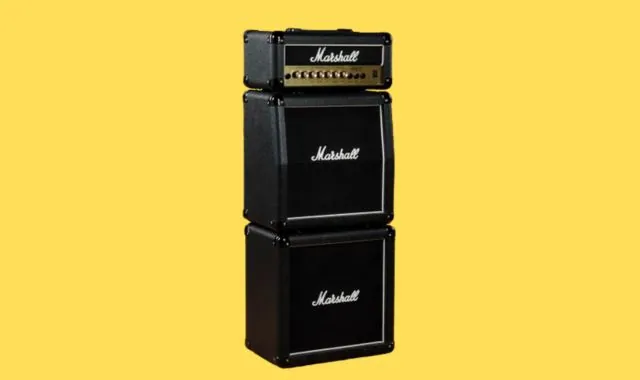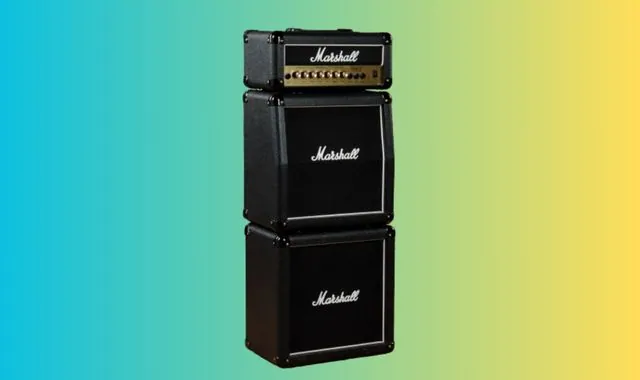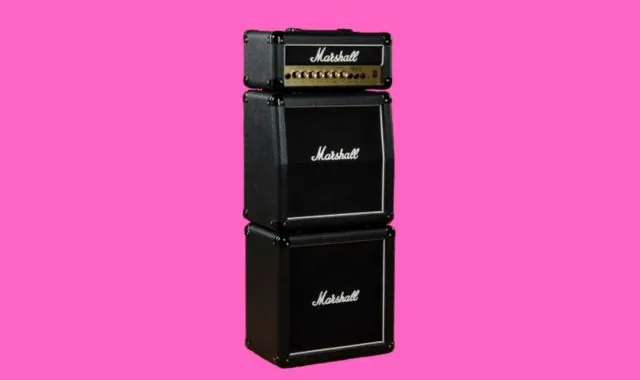Let’s face it, there’s something undeniably cool about a Marshall stack. That iconic wall of black and gold screams rock ‘n’ roll. But what if you don’t have the space (or the tolerant neighbors) for a full-blown rig? That’s where Marshall mini stacks come in! Let’s dive in to see if these miniaturized rockers deliver the sound and spirit of their bigger siblings.
What is a Marshall Mini Stack?
A Brief History of Marshall Amps
Marshall amps have been a staple in rock music for decades. Founded by Jim Marshall in the early 1960s, these amps became synonymous with the raw power and driven tones sought after by guitarists like Pete Townshend, Jimi Hendrix, Eric Clapton, and countless others. From the bluesy crunch of classic rock to the searing leads of heavy metal, the Marshall sound is legendary.

Mini Stack Features
Marshall mini stacks are essentially scaled-down versions of those classic rigs. They usually include:
- Two mini cabinets: One for the head, one that acts as a speaker cabinet.
- A compact amplifier head: This houses the controls and, often, a battery compartment for extra portability.
- Essential controls: You’ll usually find gain, volume, and basic EQ (often just a tone knob). Some models might add a switch for clean/overdrive channels.
Models to Consider
Here are some popular Marshall mini-stack options:
-
Marshall MS-2:
- The most basic of the bunch, this 1-watt micro amp is battery-powered and features a clean channel only. It’s the ultimate in portability.
-
Marshall MS-4:
- This model is similar to the MS-2 but adds an overdrive option for that classic Marshall crunch.
-
Marshall MG15MSII:
- Stepping up in power, this 15-watt mini stack includes both clean and overdrive channels, plus a touch of reverb for added dimension.
Sound Quality
The Classic Marshall Crunch
The biggest question on everyone’s mind is: Do mini stacks deliver that famous Marshall tone? The answer is a qualified yes. Especially the models with overdrive channels can get surprisingly close to that aggressive, midrange-focused Marshall crunch. It won’t be an exact replica of a roaring 100-watt stack, but the spirit is definitely there.
Clean Tones
The clean tones are decent, though they tend to lack the warmth and depth you’d get from bigger amps. They’re functional for practice but might sound a little thin if you’re used to the pristine cleans of a Fender style amp, for example.
Volume and Headroom
Don’t expect these little guys to fill a stadium. They’re great for practicing at home without disturbing others, but won’t quite cut it for gigging. And they can get a bit fizzy and lose definition when pushed too hard.
Pros and Cons
Let’s break down the good and the not-so-good:
Pros
- Super portable: Take your Marshall sound anywhere.
- Affordable: A budget-friendly way to get a taste of the Marshall experience.
- The “cool factor”: Let’s be honest, they look awesome.
Cons
- Limited sound compared to full-size amps: It’s physics – smaller speakers move less air.
- Can lack depth, especially at lower volumes: They’re better for riffing than delicate clean passages.

Who Are Marshall Mini Stacks For?
-
Bedroom Guitarists:
- Perfect for practicing at home without blowing out the windows.
-
Beginners Seeking the Marshall Look:
- Inspire a budding rockstar with the iconic Marshall aesthetic, fostering a fun connection to music.
-
Travel and Practice:
- Easy to pack for playing on the go, whether that’s on vacation or in the backstage area before a gig.
Alternatives to Marshall Mini Stacks
If the Marshall vibe isn’t essential, there are other great options:
-
Micro Amps from Other Brands:
- Boss Katana Mini, Blackstar Fly, and many others offer surprisingly good tones in tiny packages.
-
Modeling Amps:
- Positive Grid Spark, Yamaha THR, etc., offer tons of amp sounds and effects within a single, compact unit.
-
Headphones and Audio Interfaces:
- For silent practice with a huge range of tonal flexibility.
Should You Buy a Marshall Mini Stack?
If you want the Marshall look, a bit of that classic crunch, and ultimate portability, a mini stack is a super fun choice. If you’re seeking the ultimate in tone, volume, or versatility, consider other options or saving up for a full-sized Marshall down the line.
FAQs of Marshall Mini Stack
1. Is the Marshall mini stack any good?
They’re good for what they are! They offer a surprising amount of that Marshall crunch in a tiny, portable package. Perfect for practice, beginners, or anyone wanting that iconic Marshall look. They won’t replace a full-size amp, but they’re not designed to.
2. How does a Marshall Stack work?
Marshall stacks are made up of two main components:
- The Head: This houses the amplifier itself – the controls, power section, and tubes or transistors that produce the sound.
- The Cabinet(s): These contain the speakers that translate the amplifier’s electrical signals into sound waves.
Full-sized Marshall stacks often have multiple speaker cabinets for a huge, powerful sound.

3. What is the difference between a half stack and a full stack Marshall?
It boils down to speaker cabinets:
- Full Stack: Traditionally a head on top of two 4×12 cabinets (each with four 12-inch speakers), totaling eight speakers.
- Half Stack: A head on top of a single 4×12 cabinet (four 12-inch speakers).
4. Who invented the Marshall stack?
The Marshall stack wasn’t so much the brainchild of a single person. Jim Marshall, the company founder, worked with musicians like Pete Townshend (The Who) to develop amps with the power and driven tones rock ‘n’ roll demanded. The increasing use of larger venues led to the stacking of cabinets for more volume projection.
5. Is Marshall better than Fender?
That’s like asking if chocolate is better than vanilla! Both are legendary amp brands but offer different signature sounds. Marshalls are known for their aggressive midrange and classic rock crunch, while Fenders are prized for their pristine clean tones and sparkling highs. It depends on the music you play and the sound you’re after.
6. Why are Marshall speakers so special?
Marshall speakers earned their place in rock history for a few reasons:
-
Power:
- They were among the first truly loud guitar amps, meeting the demands of increasingly large concerts.
-
Tone:
- Their voicing emphasizes the midrange frequencies where electric guitars live, making solos cut through the mix.
-
The Look:
- The black and gold aesthetic became synonymous with rock music.
7. How many watts is a Marshall stack?
It depends on the specific model. Classic Marshall heads range from 50 to 100 watts, sometimes even higher. Marshall mini stacks are significantly less powerful, usually around 1 to 15 watts.
8. How many watts is a Marshall full stack?
This depends on the head used. Assuming a 100-watt head, a true Marshall full stack (with two 4×12 cabinets) is VERY loud. It’s overkill for most situations outside of truly large stages.
9. Which Marshall speakers have stack mode?
This question requires clarification. Marshall doesn’t have a universal “stack mode.” Are you referring to pairing Bluetooth speakers together or the traditional stacking of a head and cabinet(s)?






